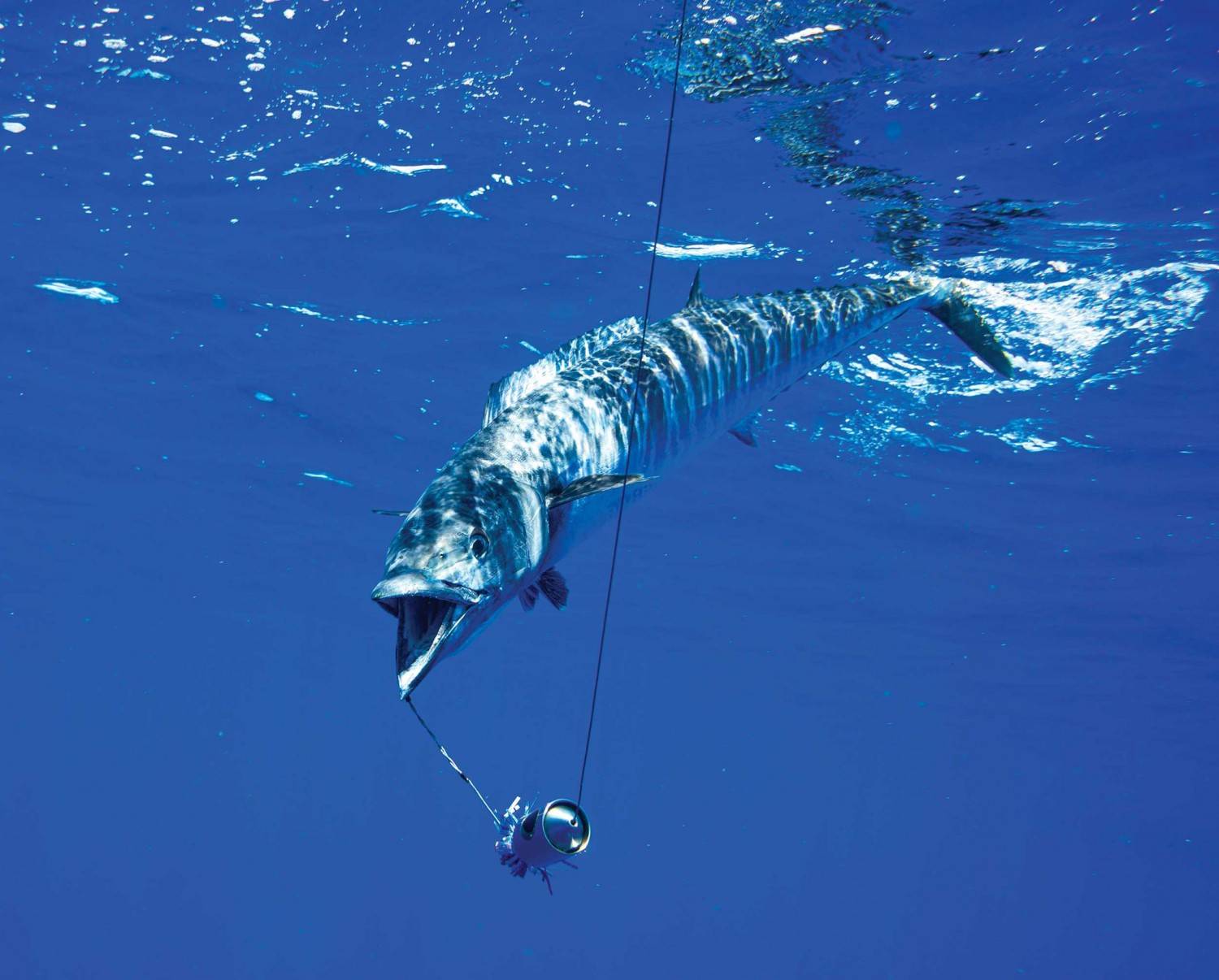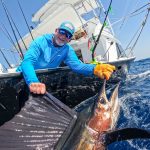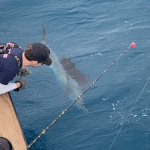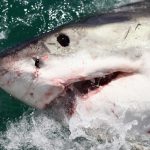Article Courtesy: saltwatersportsman.com | Originally Published: 12/17/20 | Click here for original article
Pro Tactics for Wahoo
There’s a wahoo fishery between Marathon and Key Largo that rivals any in the Southeast. It’s productive, easily accessible, and while not as well-known as other wahoo hotspots, it provides a proving ground for successful strategies and tactics.
Through years of obsessive fishing, Ryan Van Fleet of Tavernier, Florida, has deciphered wahoo patterns in the Upper Keys, and developed reliable tactics for small-boat anglers.
He says the universal precepts of wahoo fishing hold true in the Upper Keys. Think of the three T’s: tide, terrain and temperature.
The full-moon and new-moon phases, when wahoo feed actively, are favored times to target them. Wahoo gather along reef drop-offs and actively feed during these big tides. Have lines in the water half an hour before dawn. When the surface temperature drops, hunt for them deeper.
Lay of the Land
Local knowledge is indispensable as well, such as the way the water moves, the migratory patterns of the fish, and the prey species.
From Alligator Reef to Molasses Reef, for example, the Gulf Stream swings near the reef as it turns north around the peninsula, creating nutrient-rich eddies that carry both forage and predators. Those currents change every day, and the effects of water flow from the Gulf make tide changes along the reef tricky.
“Cooler water and green water push the fish out as far as 600-foot depths,” Van Fleet says. “Just because the water looks bad, it doesn’t mean the wahoo are not around. In the colder months, move out deeper and find the color change. That’s where you’ll find the wahoo. They tend to stay in an area for several days when conditions are right.”
Though wahoo can be caught year-round in the Keys, the biggest fish come in the fall and winter, around the moon tides, especially when those happen to coincide with a pre-frontal weather system.
Large female wahoo feed ahead of the first large cold fronts that come through the Keys, Van Fleet says. A 30- or 40-pound wahoo is respectable for the Keys, though he sees many much bigger. While 80-plus-pound fish are uncommon, what the fishery lacks in size, it makes up for in numbers.
Seek Solitude
“This past year, the big push happened in October and November,” Van Fleet says. “My best day, I had 14 bites and caught nine wahoo—over one tide cycle—on a strip bait rigged with a blue-and-white witch by Wild Willy fished off a planer. There was zero boat traffic that day.”
That point is significant. Boat traffic puts wahoo down. If you get out under good conditions, without too many boats around, all the better. If not, it’s a good idea to try something else and come back later when the traffic has died down.
“Patience is the key,” Van Fleet says.
Hunt Structure
Beyond the reef, look for drop-offs and ledges. Even a few feet of bottom relief might hold wahoo. Those are the same ledges where lobsters live, so look for the lobster buoys. Those buoys point to wahoo trolling grounds, but they’ll also present real hazards when a hooked wahoo makes a run toward them.
Wrecks also hold schools of wahoo. Van Fleet favors the Bibb, Duane and Eagle wrecks for vertical jigging.
“Jigging these wrecks often produces more wahoo than trolling, but the fish act differently,” he says. “Think of your jig as a flasher that attracts them.”
Additionally, seamounts like the Islamorada Hump hold good numbers of wahoo, especially later in the season. “They move with the tuna schools,” Van Fleet says. “In the spring, I catch these wahoo trolling planers.”
Rigs and Techniques
Van Fleet’s primary strategies are drifting live baits on downriggers and trolling with planers. First thing in the morning, he’ll use electric downriggers, each with a 10-pound weight, to put down live baits at two different depths: “One at 59 feet and another at 89 feet down, and the bites will tell you where the fish are.” Goggle-eyes are his favorite bait. “They’re the perfect size,” he says. “Wahoo love speedos (redtail scad), but sometimes they don’t get hooked because those baits are so big.”
Especially in the winter, when surface temperatures are often colder than at depth, there might not be many surface bites, but the bottom bite can be on fire. When it’s rough, the fish also might stay deep. He sets up his drift, lowers the baits, and watches the fish finder. A few drifts over marked fish will tell if they’re going to eat.
“With a north wind, the wahoo come tight to the reef. The bait gets pushed off the reef, and the wahoo are waiting. As a small-boat guy, I don’t want to fight the wind. I want to use the current to position my drift. Nine times out of 10, the fish face into the wind-driven current. I set up with the wind and drift live baits to the wahoo. I catch wahoo even when there is no tide, so long as it’s windy.”
Later in the morning, when bait rises to the surface, Van Fleet turns to trolling at 7 to 11 knots, with lures on the planers and ballyhoo on rigger lines.
“Planers attract fish, pure and simple. Sometimes I run deep-drop lights on my planers too,” he says. “This added flash pulls them into the spread. Frequently, one rises from 60 feet and eats the planer bait, then the rest hit the other lines. The biggest fish always seem to eat last.”
When you hook that wahoo, maintain your forward motion, to see if you can hook another. When landing a fish, keep the boat moving forward, and bring the fish alongside, keeping its head underwater. The wahoo will fall in line at the side of your boat. That’s when you decide whether to release it or invite it home for dinner.








